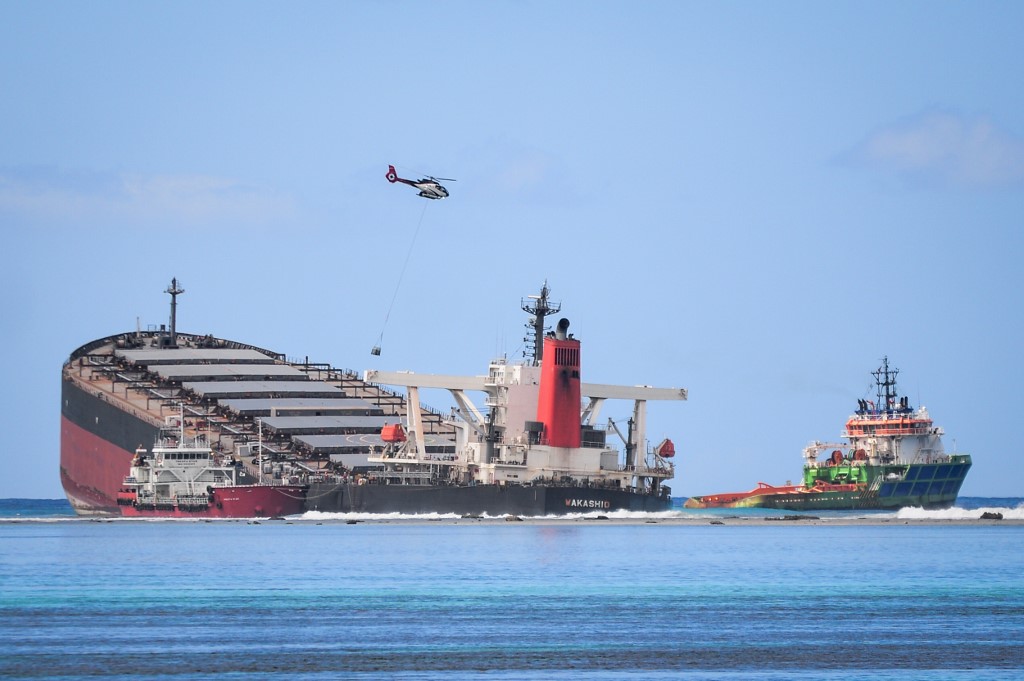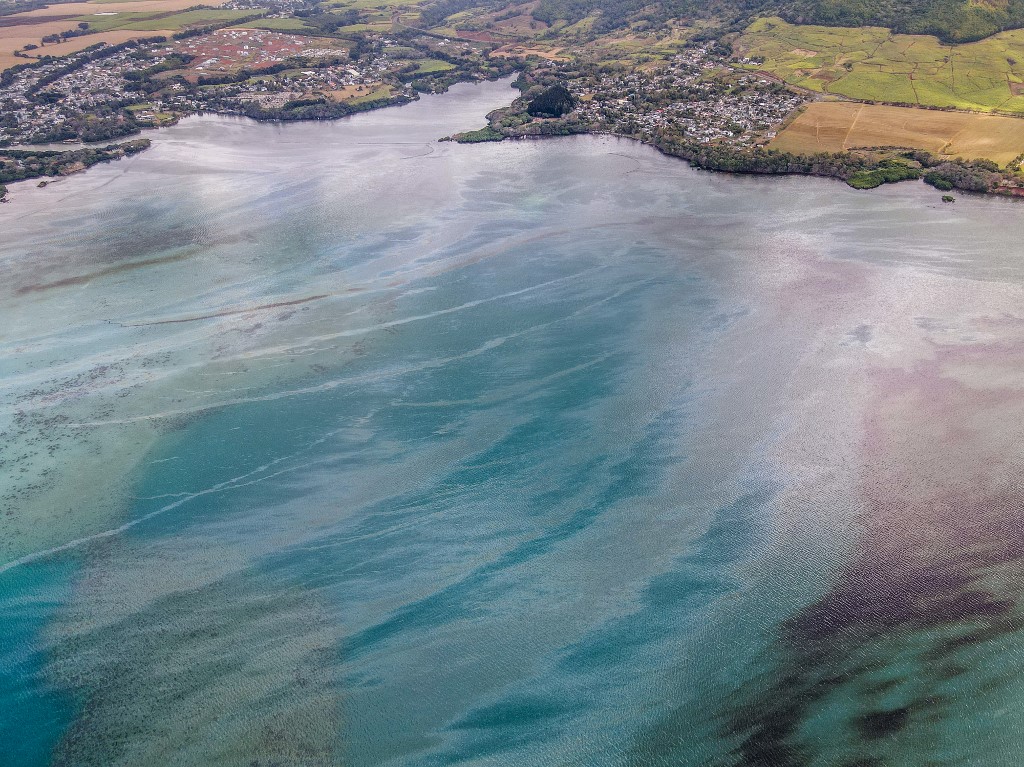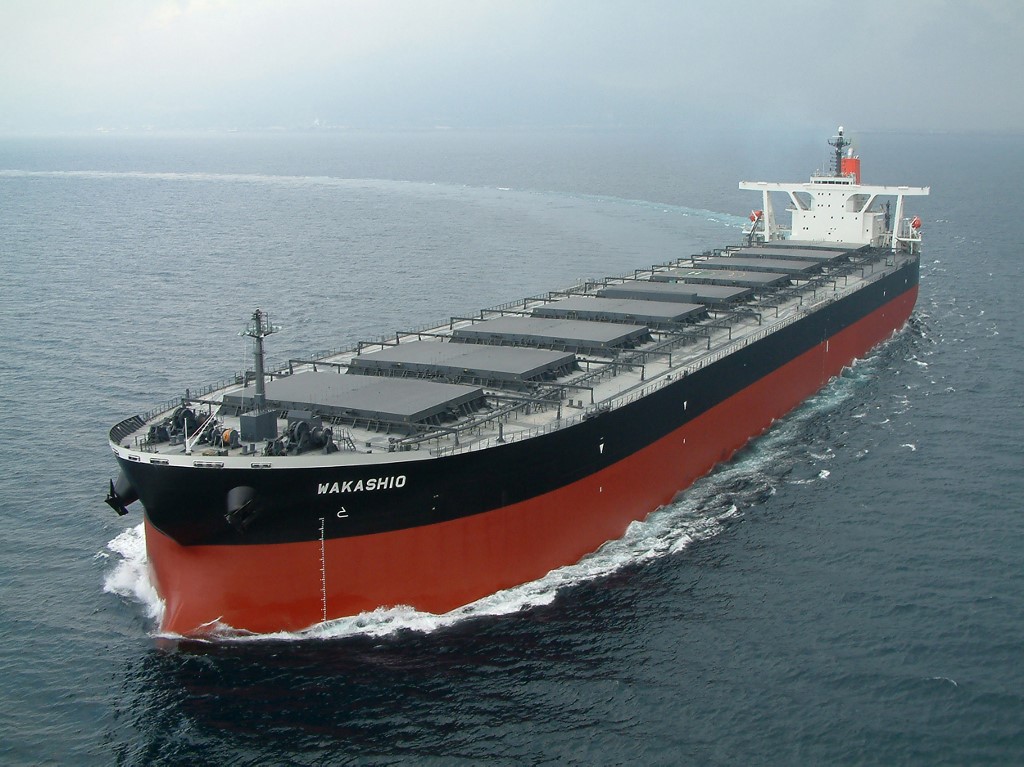
by Shingo ITO
Agence France-Presse
TOKYO, Japan (AFP) — The Japanese firm that operates a ship leaking fuel off the coast of Mauritius has been involved in accidents before, including a 2006 oil spill in the Indian Ocean.
Mitsui OSK Lines operates the MV Wakashio, which ran aground on July 25 just off the coast of Mauritius, carrying 4,000 tonnes of fuel that has been seeping into the pristine coral-filled waters of the island nation.
Both the operator and the vessel’s owner Nagashiki Shipping have apologised for the spill, and pledged to help mitigate the damage.

The accident is not the first involving Mitsui OSK Lines. In 2006, the Bright Artemis crude oil tanker operated by the firm suffered damage while attempting to rescue the crew of another ship, according to a company statement from the time. An estimated 4,500 tonnes of crude oil leaked from the ship into the Indian Ocean.
The leak took place far offshore and the spill was left to dilute and vaporise after the firm judged the crude unlikely to reach land.
The company has been involved in other smaller accidents, including in 2013, when a container ship it operated sank in the Indian Ocean.
The Tokyo-based company traces its history back to 1878, when trading house Mitsui and Co. began operating a steamboat between Nagasaki and Shanghai.
In 1884, the shipping operation was devolved to a firm named Osaka Shoshen Kaisha Lines, or OSK lines, under the umbrella of the Mitsui zaibatsu, or conglomerate.
The firm gradually expanded its routes in the 1930s and began carrying passengers and cargo between Japan and major cities in North and South America, including New York.
It was renamed Mitsui Steamship in 1942 and — like many other Japanese private shipping lines — was heavily involved in military transport before and during World War II.
It survived the chaos of the post-war period and was part of Japan’s so-called economic miracle, involved in the export of Japanese cars overseas and the import of natural gas to the energy-poor nation.
Following a series of mergers and acquisitions, it was renamed Mitsui OSK Lines in 1999, and now operates 740 vessels around the world, employing more than 1,000 people.
The MV Wakashio is owned by Nagashiki Shipping, which is based in western Japan’s Okayama.
The company currently owns 11 ships, including container ships, tankers and bulkers like the Wakashio, a so-called cape size bulker built in 2007.
The MV Wakashio had passed its latest annual inspection in March without any problems, according to Japan’s ClassNK inspection body.
Nagashiki Shipping began life as a salt ship line in the final years of Japan’s Edo period (1603-1868), according to the firm’s website.

It later expanded into the transport of bamboo, timber and charcoal and began plying coastal routes.
Originally known as Nagashiki Ship Department, the firm also transported rice to Japan from the Korean peninsula, which was under Tokyo’s colonial rule from 1910 to the end of World War II in 1945.
The firm lost all its vessels after the war, but was re-established in 1958 and renamed Nagashiki Shipping.
© Agence France-Presse







